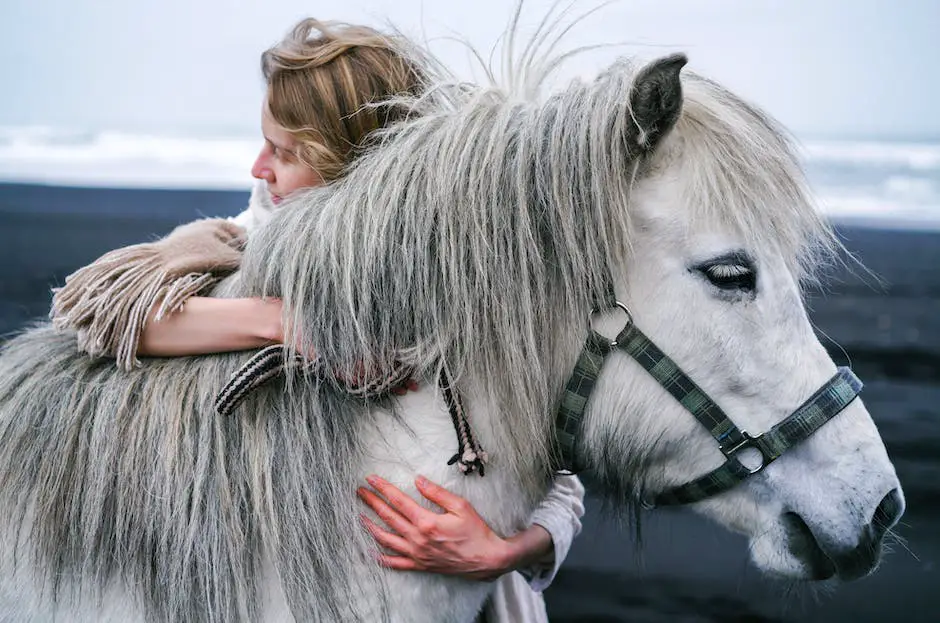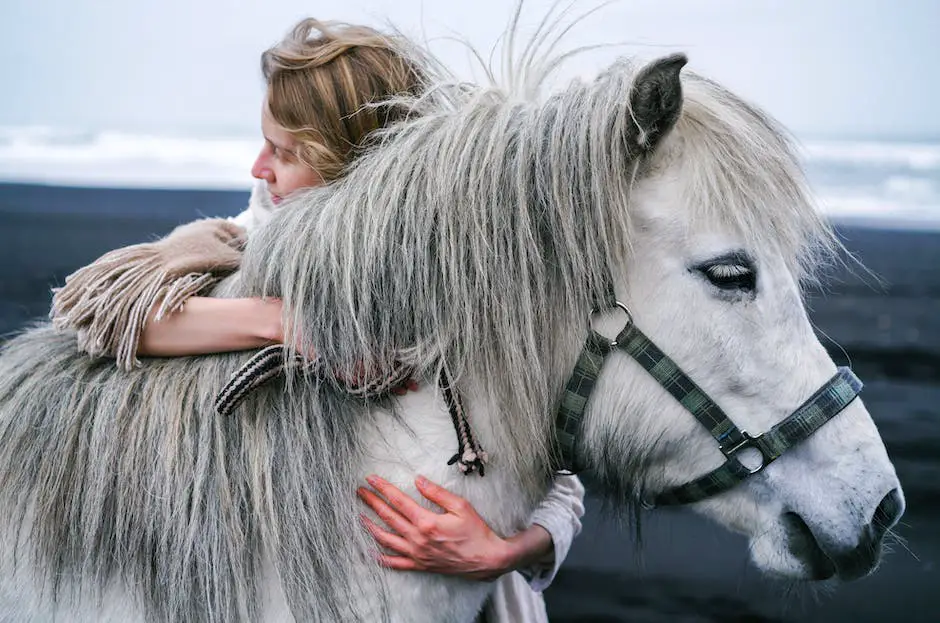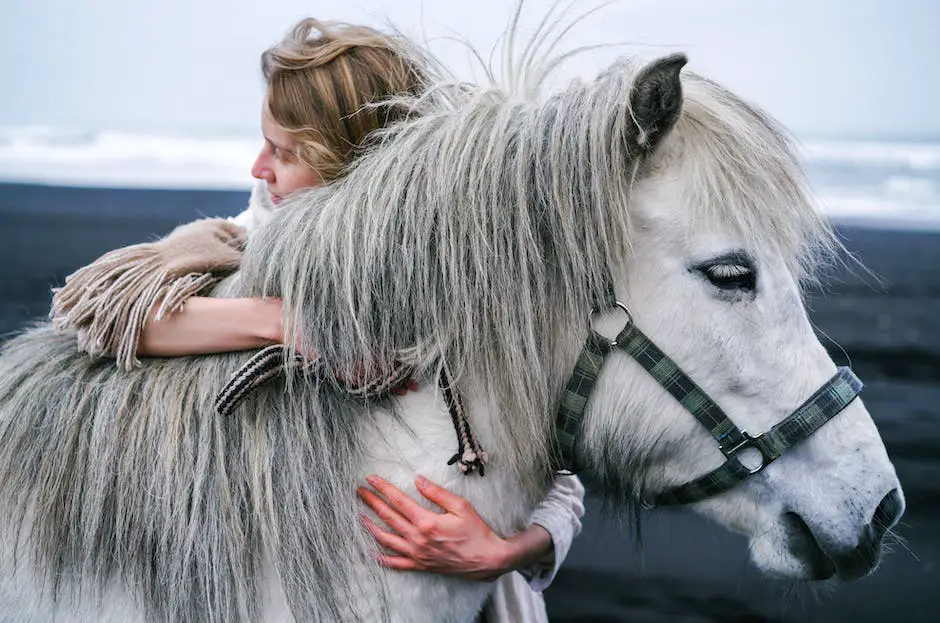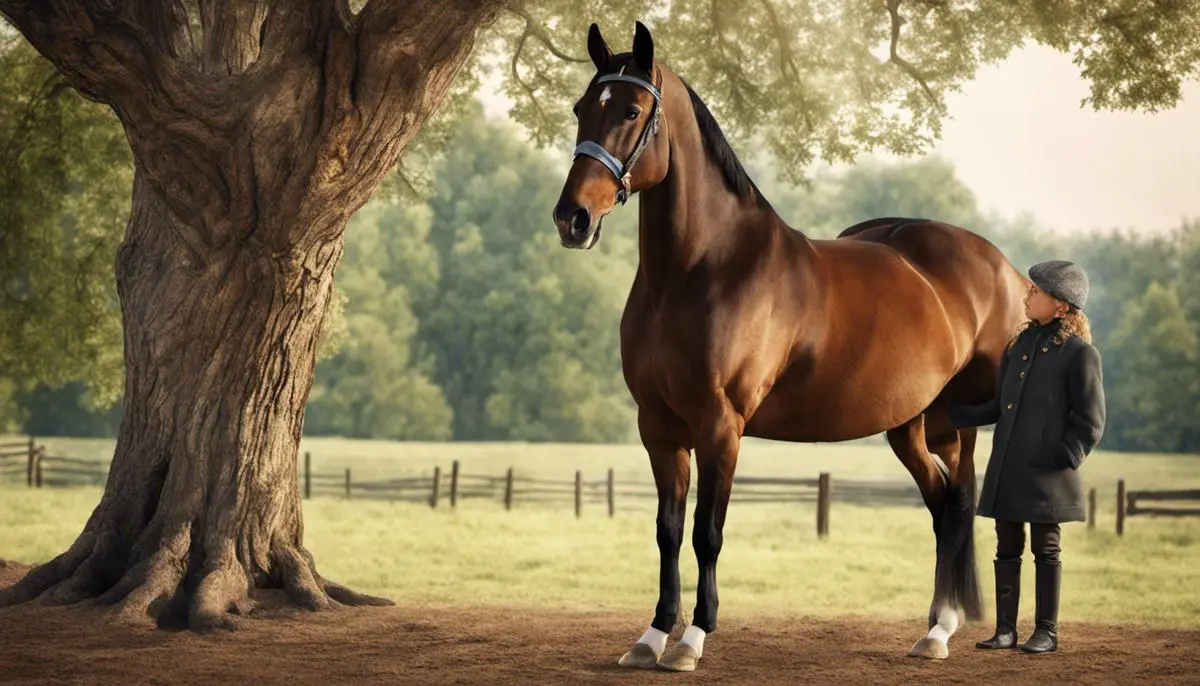The discipline of equine breeding and genetics is laced with a fascinating history and complex biological science, and of particular interest is the intriguing origins and genetic lineage of the Russian Warmblood. This breed, with its distinct genetic characteristics and fascinating tale of evolution, traces back to a compelling intermingling of multiple other breed lines, moulded by specific geographical influences and human intervention. The Russian Warmblood has etched a prominent place for itself in the realm of equine performance, exhibiting exceptional endurance, flexibility under diverse conditions, and a notable role in various equestrian sports. However, examining the Russian Warmblood under a highly scientific and academic lens reveals the intricate tapestry of breeding practices, conservation efforts, and the inevitable challenges posed by the need to maintain the breed’s genetic diversity and standards. Furthermore, a comparative study with other Warmblood breeds highlights the unique features of the Russian Warmblood, providing valuable insights into its physiological, behavioral, and performance characteristics.
Table of Contents (Horspedia)
Origin and Genetic Lineage of the Russian Warmblood
The Historical Lineage Influencing the Development of the Russian Warmblood Breed
In the realm of equine genetics, one breed of horse stands out as a testament to strategic breeding and adaptive development – the Russian Warmblood. Although relatively new, dating to the 18th and 19th centuries, the Russian Warmblood is the product of a rich historical lineage. The story of the breed’s genesis is fascinating, evoking elements of geography, science, and a society’s cultural evolution.
The inception of the breed’s development began in Russia during the reign of Peter the Great. Keen to modernize Russia’s military and transport capabilities, he encouraged the import of superior horse breeds from Western Europe. He utilized these foreign breeds, known for their strength and stamina, to improve the local Russian horse stock.
One pivotal breed in this endeavor was the Dutch Harness Horse. Originally imported to improve agricultural horses, the Dutch Harness contributed significant elements to the emerging Warmblood breed, including size, robust physique, and a notable sense of calmness and integrity. This equine has played an important part in constructing the body shape of the modern Russian Warmblood.
For enhancing gait and speed, the Thoroughbred played an essential role in the Russian Warmblood’s lineage. The Thoroughbred, escorted into Russia’s horse breeding program during the 1700s, brought its signature characteristics of speed and stamina. Blending this breed with local lines infused the Russian Warmblood with excellent athletic capacities and a heart to meet demanding performance criteria.
Orlov Trotters, an indigenous breed cherished for their resilience, trotting gait, and ability to endure Russia’s harsh climate, also found their DNA infused into the Russian Warmblood gene pool. The Orlov’s influence added resilience and endurance to the Russian Warmblood, allowing it to thrive in diverse climatic conditions.
Another defining influence in the breed’s lineage was the strategic incorporation of Arabian stock. Renowned for their refinement, endurance, and spirited, yet gentle temperament, Arabians helped imbue the Russian Warmblood with its noted demeanor and physical grace. Arabian bloodlines also enhanced the Warmblood’s versatility, making it a valuable horse for utilitarian and recreational purposes alike.
In the 20th century, the influence of famed European Warmbloods, most notably the Trakehner and Hanoverian, further fine-tuned this now increasingly distinct Russian Warmblood. The Trakehner contributed remarkable endurance and elegance, while the Hanoverian was prized for its power and adaptability in dressage and jumping disciplines.
Therefore, the Russian Warmblood is a testament to breeding strategy aimed at optimization for specific traits. By selectively incorporating the attributes of multiple breeds over centuries, Russian breeders accomplished an equine breed of remarkable strength, grace, endurance, and versatility; an embodiment of Russian resilience and an ever-evolving understanding of equine genetics. It stands as a compelling testament to the power and potential of purposeful breeding, and as such, commands deserved respect within the equine world.

Role of Russian Warmblood in Equine Performance
The continued evolution and refinement of equestrian breeds through strategic breeding practices brings us to the prominent influence of the Russian Warmblood in modern equestrian sports competitions. The Russian Warmblood has been pivotal in shaping various disciplines, due to its unique genetic makeup and resultant traits.
This equine breed stands as an integral cornerstone in modern competitive equestrian sports, namely dressage, jumping, and eventing, consistently showcased in both regional and global championships. Crucial in the establishment of this influence were the qualities inherited from several domestic and foreign breeds, which have conjoined in the Russian Warmblood to create a horse of vast potential and performance caliber.
Aside from its innate strength and speed, the Russian Warmblood introduces a commendable level of trainability – a quality arguably conceived from the mingling of Arabian bloodlines, known for their intelligence, with the disciplined Dutch Harness Horse lineage. This genetic amalgamation yields horses that not only learn quickly but are also amiable towards their trainers and riders. Combine this with their large, robust frames that are capable of engaging in stamina-demanding equestrian sports, and the vast competitive appeal of these horses becomes more apparent.
Equally essential is the inclusion of Thoroughbred and Orlov Trotters’ genes into the pool, bestowing upon the Russian Warmblood enhanced stamina and resilience. This results in a breed that is capable of not only surviving but also thriving under physically challenging conditions. These traits are especially advantageous in eventing, a demanding equine competition requiring the horse to undergo rapid transitions between rigorous physical activities.
Moreover, the incorporation of Broad European Warmblood breed traits has further elevated the Russian Warmblood’s competitive edge in equestrian events. European Warmblood breeds such as the Trakehner and Hanoverian, known for their versatility and prowess in various equestrian disciplines, have contributed immensely in elevating the breed’s capabilities. Consequently, this genetic enrichment provides the Russian Warmblood with its characteristic athletic versatility, enabling it to excel in various equestrian disciplines.
Modern equine competition has undeniably, and perhaps irreversibly, been imprinted by the Russian Warmblood, with its prolific presence throughout various equestrian sports. This can be seen as a testament to the multitude of qualities it has assimilated from diverse breeds through systematic and purposeful breeding, establishing high-performance standards within the realm of equine athleticism. As a result, this insight into how the Russian Warmblood has molded equestrian sports competition underscores the importance of strategic breeding – not only for enhancing the performance of a breed but also for maintaining variety and evolving animal genetics in sustained harmony with spectating human fascination.

Current Breeding Practices and Conservation
Delving further into the Russian Warmblood breed’s journey into the 21st century, it’s essential to acknowledge the innovations that have led to the breed’s continued fervor for excellence. Notably, advances in genetic research have greatly benefited the Russian Warmblood breed’s development. Molecular profiling has allowed scientists to identify and appreciate the individual genetic contributions from various parent breeds. This has, in effect, furnished a more comprehensive insight into the breed’s remarkable attributes, which have been articulated through centuries of selective breeding.
Equine genetic studies, particularly for breeds like the Russian WarmbIood, are expanding from merely understanding bloodlines, to decoding the very DNA that influences attributes such as athleticism, temperament, and longevity. Such advances offer unprecedented control over the Russian Warmblood’s genetic future, with the potential to refine and enhance these glorious animals further.
From a conservation perspective, the 21st century presents unique challenges. Despite the breed’s admirable traits, the Russian Warmblood is not as populous as other warmblood breeds, and measures for maintaining the breed’s genetic diversity while avoiding inbreeding are crucial for the breed’s survival. Significant actions are being taken through breeding programs geared towards sustaining genetic variation while preserving quintessential breed characteristics.
Successful breeding programs do not occur in isolation; they benefit from international cooperation and exchange. The incorporation of genetic material from acknowledged breeds across the globe enhances the genetic pool of the Russian Warmblood. The 21st century has witnessed a more global approach, with Russian breeders importing and crossbreeding with established warmblood breeds, such as the Dutch Warmblood and the Swedish Warmblood.
Such international collaborations have also seen Russian Warmbloods exported to international breeding programs. These programs not only enhance the breed’s visibility and reputation but also contribute to the genetic safeguarding of the Russian Warmblood. By dispersing the breed internationally, breeders ensure the Russian Warmblood’s persistent survival, even if local populations suffer from crises.
Moreover, today’s competitive equestrian landscape demands versatility, and Russian Warmbloods are rising to the occasion. Their adeptness at both dressage and jumping events keeps them in demand, with their grace, endurance, and resilience shining through in each performance.
However, it’s the diligence and dedication of breeders and researchers that truly drive the future of the Russian Warmblood. Their crucial work in study, preservation, and responsible breeding, born out of pure passion for the breed, will undoubtedly help the Russian Warmblood thrive in years to come. As we progress in the 21st century, the seamless fusion of traditional horse breeding with modern scientific strategies continues to shape and galvanize the remarkable journey of the Russian Warmblood.

Comparison of Russian Warmblood with Other Warmblood Breeds
Emerging from a remarkable blend of genetic influences, the Russian Warmblood proudly claims its ancestry from a variety of respected equine breeds, each contributing distinctive traits that together compose this robust and magnificent breed. Yet the question remains – how does it compare to other well-known Warmblood breeds? An analysis of data from equestrian performance tests, genetic profiling, and global breeding practices provides valuable insights into this question.
Comparative studies between Warmblood breeds are enlightening, especially when it comes to equestrian events, a critical metric of sports horse breeds performance. Specifically in international eventing, Russian Warmbloods have demonstrated competitive prowess. These horses have shown remarkable versatility, excelling in disciplines such as dressage and show jumping, thus placing them favorably alongside other dynamic Warmblood breeds such as the Dutch Warmblood and the German Hanoverian. Undoubtedly, the diligent inculcation of stamina from Thoroughbreds and Orlov Trotters, and the trainable temperament from Arabian lineage and Dutch Harness Horses, plays a significant role.
Genetic research, particularly molecular profiling, has come to the forefront of understanding breed characteristics. Russian Warmblood’s genetic makeup reflects an equine DNA smorgasbord that supports the strength, endurance, grace, and versatility the breed is renowned for. It certainly stands its own ground in genetic distinctiveness when compared to other Warmbloods, imbued with a plethora of genes that facilitate athleticism, favorable temperament, and longevity.
However, the challenges of maintaining genetic diversity while adhering to breed standards are as much a part of the Russian Warmblood history as other Warmblood breeds. Inbreeding is a consistent concern requiring stringent management, with breeders working diligently between the balance of preserving breed characteristics while sustaining necessary genetic variation.
But the Russian Warmblood’s genetic saga is not a solitary endeavor. International cooperation has embraced the breed’s progression, resulting in a synergistic beyond borders. Importing from established Warmblood breeds, for instance, has opened the door to the formation of new traits, thereby expanding the breed’s genetic pool. Conversely, exporting of Russian Warmbloods to international breeding programs has embedded its genetic legacy far and wide.
In conclusion, it is clear that the genetic journey of the Russian Warmblood is characterized by strategic decision-making rooted in the enrichment of physical attributes and improvement of performance abilities. This approach, coupled with the dedication of astute breeders and researchers navigating the realm of genetic diversity, presents the Russian Warmblood in a favorable light when compared to other Warmblood breeds. It stands not just as a mere derivative but as a dynamic blend of characteristics shaped by generations of careful and purposeful breeding.

Delving deep into the genetic lineage and historical context of the Russian Warmblood reveals not only the intricate intricacies of equine breeding but also highlights how geography, human intervention, and other external factors have been instrumental in sculpting the breed as we know it today. Beyond its fascinating origins, the Russian Warmblood continues to impress in the field of equine sports, owing to its adaptability, endurance, and performance attributes. Yet, underlying every honor that the breed obtains, there is a complex web of modern breeding practices, conservation measures, and the perpetual struggle to preserve the genetic diversity and uphold the breed’s standards. Yet, as the analysis pertaining comparatives with other Warmblood breeds shows, despite sharing common ground with numerous others, the Russian Warmblood has succeeded in carving an independent identity for itself, distinguished by its unique traits and standing in the global context. The Russian Warmblood’s tale is not just a chronicle of equine breeding but a testament to the extent we have come in understanding, preserving, and optimizing the equine genetics.

